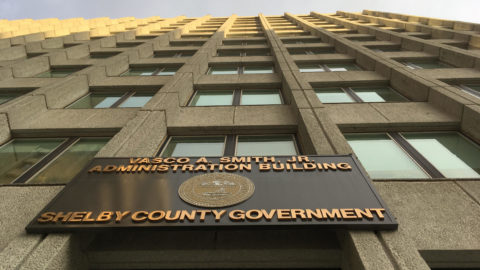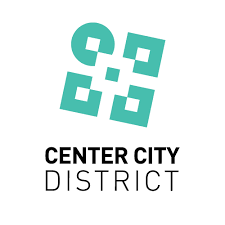From Strong Towns:
It seems like you can’t get anything developed downtown without some sort of tax deal.
It’s not difficult to find an example in Minneapolis-St. Paul: Pillsbury A-Mill, Izzy’s, Central Corridor development, Vikings Stadium, St. Paul Saints stadium, St. Paul’s Farmer’s Market Lofts, the Pentfield Lund’s, the American Academy of Neurology and that’s just scratching the surface. Even smaller towns, like Mankato (pop 40,000) can’t get a redevelopment project going without a little help.
Whether you politically agree with these tax subsidies doesn’t matter, what matters is we acknowledge that we can’t keep this as the status quo for much longer.
The new economy, which I argue we’re transitioning into, will require multiple players who can produce small-scale, incremental development. This is how urbanism will be accomplished in the next 20 years, but it will probably need to occur outside of contemporary channels. This means creatively circumventing tradition lending methods, bypassing euclidean zoning and approval processes with out-dated bureaucratic methods and by avoiding the single developer mentality.
This is a small barber shop in Excelsior, Minnesota. It’s kind of ugly, but it’s exactly what we want.
We put too much emphasis on large buildings and having one developer come in and develop an entire city block. This is one of the reasons developers feel they may need a subsidy, because they are being asked to take on big initial financial risk. That’s precisely why they ask for subsidies and we shouldn’t necessarily blame developers for taking these subsidies. We should be blaming ourselves for giving it to them. I don’t fault a developer asking for $3.2 million when the public is actually willing to subsidize at a rate of $20,779 per parking space!
The question is: how do you make these buildings, like the barber shop in Excelsior, a reality?
First of all, it happens on its own.
This is the least satisfactory answer. If left to its own devices, this type of development will happen eventually. The cost of gasoline, electricity and desire for authentic walkable, urbanism will increase to the point where we’ll make the transition.
It was not New Urbanism that killed suburbia. It was the financing of suburbia, struggling economy and jobs market and high gas prices. If these trends that crippled suburbia continue the development I’m referring to above will happen on its own. The problem is that I don’t think we can wait that long. A lot of capital left with the financial collapse. Traditional methods of private financing that could have helped build what we’re talking about will likely be hard to come by. That means local governments, local businesses and local economies need to get creative.
1. Local Building Bank
The idea of a nation-wide infrastructure bank has been thrown around in the media, but it’s concentrated on large-scale projects like high-speed rail, large bridges and highway projects. What if it happened at a hyper-local level for small development projects. My idea goes something like this:
1) Get local and/or downtown businesses together
2) Map the empty and under-used properties in a particular area
3) Create a development plan and get the city (or other entity) involved to add a small “special assessment” to property owners
Let this ‘bank’ add up until you have enough money to develop. All the properties that accepted the special assessment would have an ownership stake in the new building and profit from it being leased or sold. A collective organization could then manage and lease that property, returning any profit to those who paid the assessment. This creates an environment where all building owners and tenants in downtown have a shared interest in its success.
2. Land Value Taxation
One problem that Minneapolis and St. Paul have is that of open-surface parking lots in downtown. Besides our love of the automobile, a reason I believe that they still exists is because of our system of property taxation. We put a tremendous burden on the buildings themselves and their capital improvements (Check out Chuck’s video “Property Tax vs. Land Tax” on YouTube).
The problem with this is obvious: parking lots don’t have buildings to be taxed (besides small wooden shacks). The answer to this is to tax land at a greater emphasis (Land Value Taxation), based on proximity and other amenities, and not punish small land owners for putting up the type of buildings like the barber shop.
By modifying this element of our tax code, we are essentially incentivizing people to use their empty lots and encourage them to create better places. A few things would need to occur, including fair and accurate evaluations and possible modifications to land use regulations (you can read some good academic versions of this here and here).
The way this needs to start is through an experiment; by advocating for a “Land Value Taxation Modification Zone”. The idea goes like this: draw up an area similar to what you’d do with a tax increment financing district. Inside the area, make it a zone where land is taxed at a higher rate, but capital improvements are not (or taxed at a lower rate).
3. Code-Free Zones
What if architects, builders and developers could bypass a codes? Would more be built? I’m not entirely sure, but I’m confident it would aid in the developing of small, incremental buildings. Again, instead of the government granting tax increment financing to a particular district, it could create a ‘Code-free zone.’ Now, there would need to be stipulations: it wouldn’t be “code free” per se, but more so a list of aims and objectives that would need to be reached. Aims and objectives would be things like good urban design, added street density, transit-accessibility, walkability and decent architecture.
In a sense, we’d be trying to achieve a version of Form Based Coding, minus the regulations that require a costly elevators for two to three story buildings. I’m certain we can come to a societal consensus on what’s a good code and what’s a bad code. My rule of thumb is when you look at a code you can’t immediate pinpoint who lobbied for it.
___
I love the idea of local government experimentation and hopefully forums like Strong Towns can help get the dialogue started. I like the ideas above, but I’m not sold on all of them. I’d love to read your thoughts, for and against, in the comments section.
I’d also like to take this opportunity to promote a solid land use and transportation blog in the Twin Cities, Streets.MN. If you’re at all interested in contemporary issues in Minnesota land use and transportation, it’s a website worthy of a bookmark.





